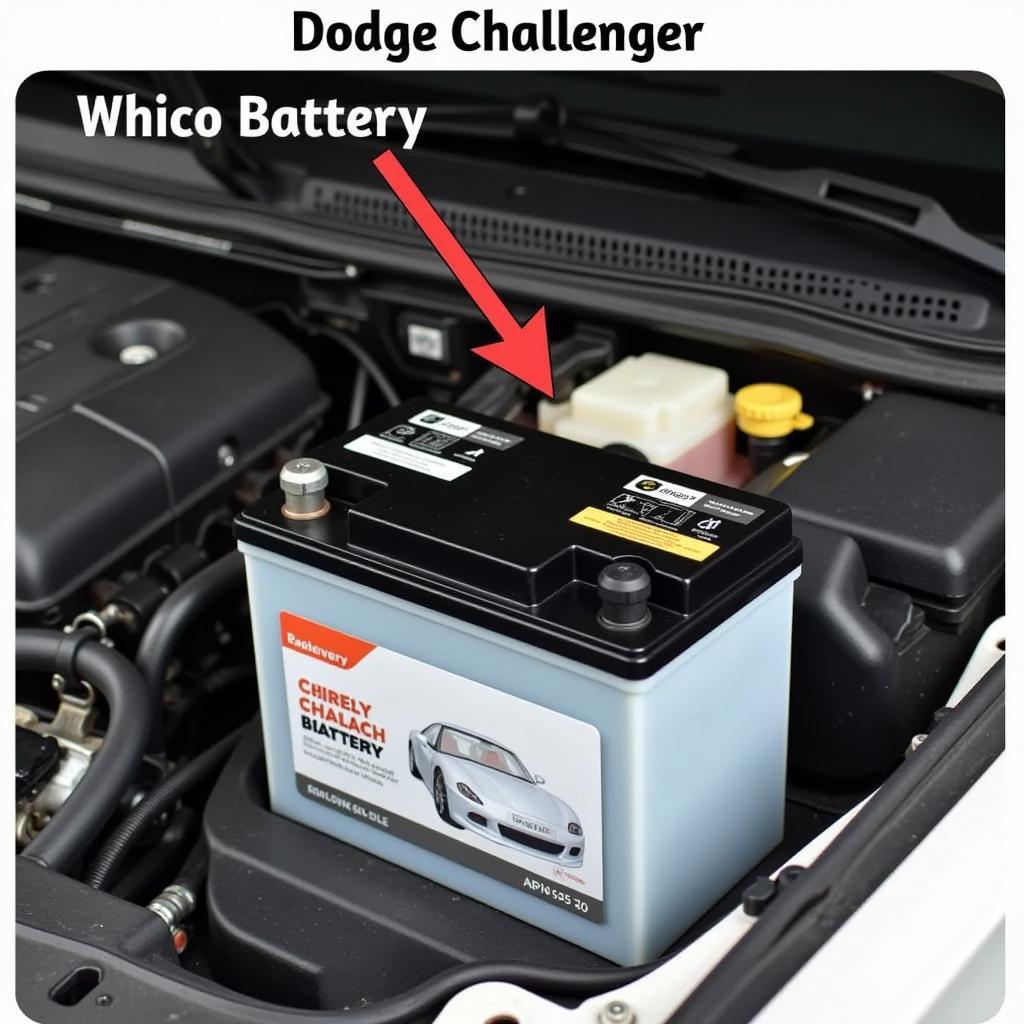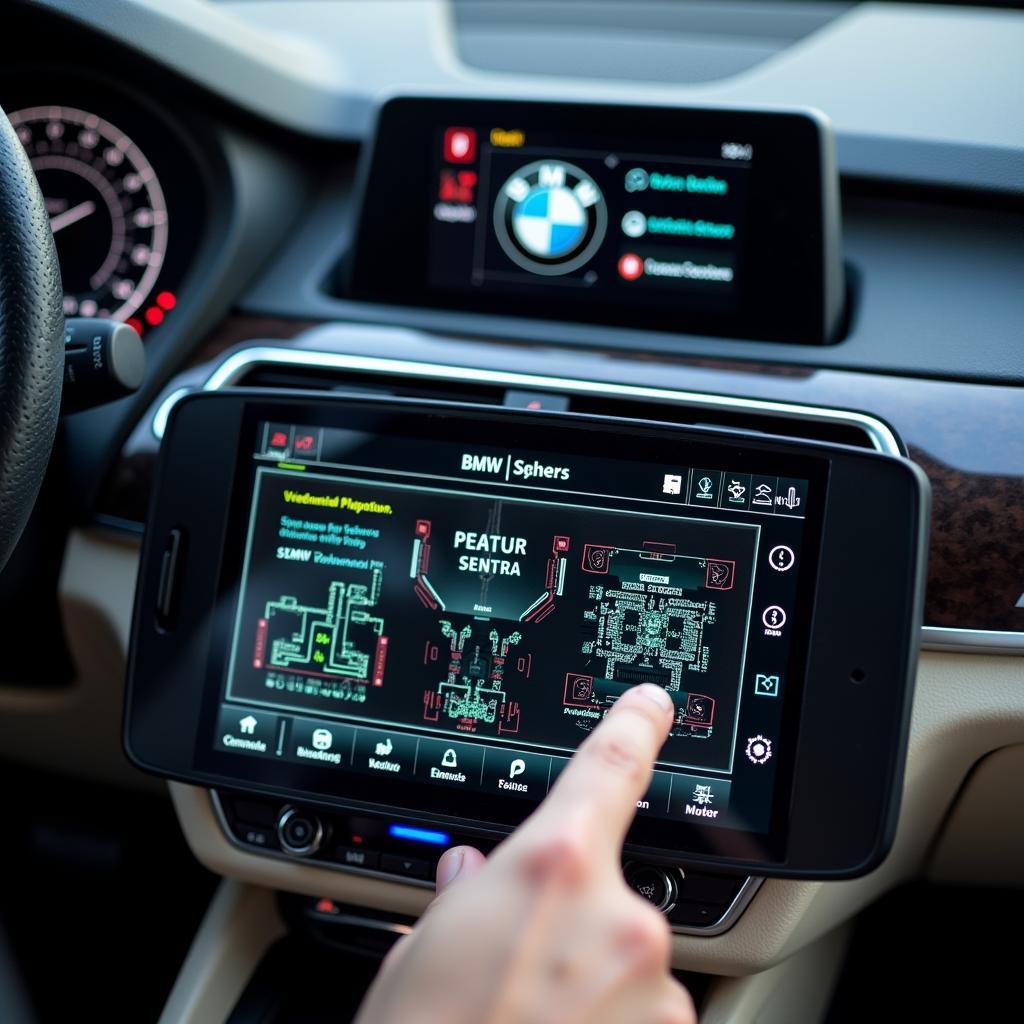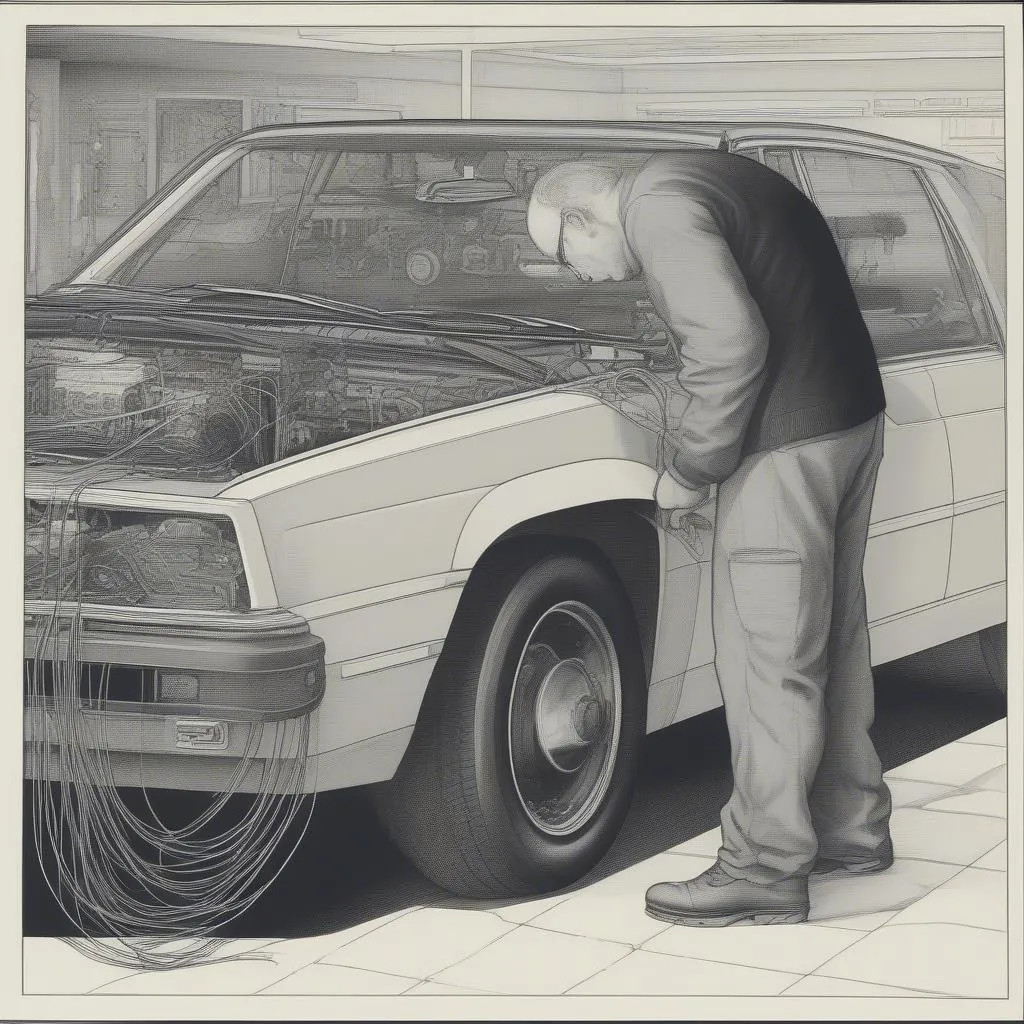A dead battery in your Dodge Challenger can be incredibly frustrating. Whether it’s a slow drain over time or a sudden failure, “dodge challenger battery drain” is a common search term for owners facing this issue. This guide will help you diagnose and fix the problem, getting you back on the road in no time.
Understanding Your Challenger’s Electrical System
Your Challenger’s electrical system, like all modern vehicles, is complex. It’s not just about starting the engine anymore; it powers everything from the infotainment system to the security features. A constant draw, even when the car is off, is normal. However, excessive drain can lead to a dead battery, leaving you stranded.
Common Culprits Behind Dodge Challenger Battery Drain
Several factors can contribute to excessive battery drain. Some of the most common include:
- Parasitic Draw: This occurs when a component continues to draw power even when the car is off. Faulty wiring, a stuck relay, or a malfunctioning module can all be culprits.
- Failing Alternator: While not directly draining the battery, a failing alternator won’t charge the battery properly while driving, leading to a depleted battery over time.
- Old Battery: Batteries have a limited lifespan. An old battery may no longer hold a charge effectively, even if the charging system is working correctly.
- Extreme Temperatures: Both extreme heat and extreme cold can negatively impact battery performance and lifespan.
- Aftermarket Accessories: Improperly installed aftermarket accessories, like audio systems or lighting, can create a significant parasitic draw.
 Dodge Challenger Battery Location
Dodge Challenger Battery Location
Diagnosing the Battery Drain
Before you start throwing parts at the problem, it’s crucial to diagnose the source of the drain accurately. Here’s a step-by-step guide:
- Test the Battery: Use a multimeter to check the battery voltage. A fully charged battery should read around 12.6 volts.
- Check the Alternator: With the engine running, the alternator should output around 14 volts.
- Perform a Parasitic Draw Test: This involves disconnecting the negative battery cable and measuring the current flow with a multimeter. A draw of over 50 milliamps is generally considered excessive.
- Isolate the Circuit: If you detect a high parasitic draw, begin isolating the circuits by pulling fuses one at a time while monitoring the multimeter. When the current draw drops significantly, you’ve identified the affected circuit.
Fixing the Problem
Once you’ve identified the source of the drain, you can begin to address the issue. Here are some common solutions:
- Replace Faulty Components: If a specific component is causing the drain, such as a faulty door lock actuator or a malfunctioning radio, replacing the component is usually the most effective solution.
- Repair Wiring Issues: Damaged or corroded wiring can also lead to parasitic draw. Repairing or replacing the affected wiring can resolve the issue.
- Replace the Battery: If the battery is old or damaged, replacing it is necessary.
- Upgrade the Alternator: A failing alternator needs to be replaced to ensure proper battery charging.
- Seek Professional Help: If you’re uncomfortable working on your Challenger’s electrical system, it’s always best to consult a qualified mechanic.
“A systematic approach to diagnosing a battery drain is essential. Start with the basics and progressively narrow down the potential causes,” advises John Miller, ASE Certified Master Technician.
Preventing Future Battery Drain Issues
- Regularly Check Your Battery: Inspect the battery terminals for corrosion and clean them as needed.
- Limit Accessory Use While the Engine is Off: Avoid leaving the headlights, radio, or other accessories on for extended periods when the engine isn’t running.
- Address Electrical Issues Promptly: Don’t ignore warning signs like dimming headlights or slow engine cranking.
Conclusion
Dealing with a “dodge challenger battery drain” can be a hassle, but with the right knowledge and tools, you can effectively diagnose and fix the problem. By following the steps outlined in this guide, you can get your Challenger back on the road and avoid future battery drain issues. Remember, regular maintenance and prompt attention to any electrical problems can help keep your Challenger’s battery healthy and reliable.
“Preventive maintenance is key to avoiding battery problems. Regular checks and prompt repairs can save you time and money in the long run,” adds Maria Sanchez, Automotive Electrical Systems Engineer.
FAQ
-
How long does a Dodge Challenger battery last? Typically, a Challenger battery lasts 3-5 years, depending on usage and environmental conditions.
-
Can I jump-start my Challenger with a dead battery? Yes, you can jump-start a Challenger with a dead battery using another vehicle or a portable jump starter.
-
What are the signs of a bad alternator? Dimming headlights, flickering interior lights, and a warning light on the dashboard are common signs of a failing alternator.
-
How can I test my Challenger’s battery? Use a multimeter to check the battery voltage. A fully charged battery should read around 12.6 volts.
-
What is a parasitic draw test? This test measures the current flow from the battery when the car is off, helping identify any components drawing excessive power.
-
Is it safe to drive my Challenger with a bad alternator? It’s not recommended to drive with a bad alternator, as it won’t charge the battery, eventually leading to a complete electrical system failure.
-
How can I prevent battery drain in my Challenger? Regular maintenance, limiting accessory use while the engine is off, and addressing electrical issues promptly can help prevent battery drain.


